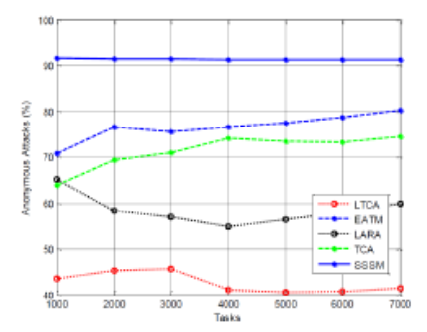


Indian Journal of Science and Technology
DOI: 10.17485/IJST/v16sp1.msc25
Year: 2023, Volume: 16, Issue: Special Issue 1, Pages: 179-191
Original Article
Vanlalruata Hnamte1*, Jamal Hussain1, Samuel Lalmuanawma2, Chhakchhuak Lalrinawma3, Lalchhanhima Hmar4
1Department of Mathematics and Computer Science, Mizoram University, India
2Department of Computer Science, Government Champhai College, India
3Department of Computer Science, Government Zirtiri Residential Science College, India
4Department of Computer Science, Government Serchhip College, India
*Corresponding Author
Email: [email protected]
Received Date:23 January 2023, Accepted Date:09 June 2023, Published Date:13 September 2023
Objectives: The mobile’s Ad-hoc 5G networks are now used in almost every sector. The increasing usage of mobile Ad-hoc 5G networks may be used not only on personal computers but also on mobile phones, tablets, and laptops due to their low cost and simplicity. Developing a slicing approach to security for mobile Ad-hoc 5G/6G networks and their wired equivalents are proposed. If the attacker must first get physical access to the cable system or terminal devices on the mobile Ad-hoc 5G networks, then a standard receiver put within the network range on the mobile Ad-hoc 5G networks will be granted authorization. Methods: The 5G network slicing design allows the multiplexing of virtualized and separate logical networks on the same physical network infrastructure. Each network slice is a self-contained, end-to-end network designed to meet the unique needs of a certain application. Mobile Ad-hoc 5G data encryption is handled using the Temporal Key Integrity Protocol (TKIP), which employs the same encryption method as RC4 as WEP but, unlike WEP, utilizes static keys (i.e., keys change frequently). Findings: 5G network slicing enables mobile network operators to build a virtual border for a single customer or range of devices. Only approved devices are permitted to connect to the segmented network, reducing this attack vector significantly. Slicing may be used as part of a private network to provide an extra layer of security, or on a public network to add a security layer without incurring the costs associated with maintaining the network infrastructure. There is a notion of shared security responsibility when network slicing is employed on public mobile networks. Comparable to cloud computing, where network operators are responsible for safeguarding the infrastructure and the business handles the software security layer. Future 6G network security planning must take into account the new possibilities, risks, and trust paradigms presented by the development of cellular communication offered by 5G. Despite changes in communication implementation, the slicing approach to security for mobile Ad-hoc 5G/6G networks and their wired equivalents is comparable to the proposed model. This model focuses more on the needs for authentication of mobile Ad-hoc 5G clients and access points,as well as maintaining the confidentiality and integrity of the data shared, in order to secure information on mobile Ad-hoc 5G/6G networks. Novelty: The signals of Mobile Ad-hoc 5G devices have a highly complicated structure and a broad spectrum, so standard radio surveillance equipment cannot detect these signals and the nearby Mobile Ad-hoc 5G devices. The experiment has demonstrated that reliable detection of a Mobile Ad-hoc 5G signal by contemporary radio surveillance systems within a broad frequency band is only possible based on an energy characteristic in the presence of parallel analytics bands of several tens of megahertz width at a minimum of 400 velocities and its ranges MHz/s and in the adjacent field zone.
Keywords: Cloud Security; Mobile Adhoc; 5G networks; Personal Computers; Security; Terminal device; Slicing approach
© 2023 Hnamte et al. This is an open-access article distributed under the terms of the Creative Commons Attribution License, which permits unrestricted use, distribution, and reproduction in any medium, provided the original author and source are credited. Published By Indian Society for Education and Environment (iSee)
Subscribe now for latest articles and news.